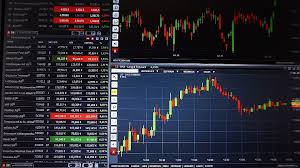
In the world of forex trading, understanding various concepts is crucial for successful trading strategies. One such concept is the “swap,” which can significantly impact your trading outcomes. This article will explain what a swap is in forex, how it works, and the factors that influence swap rates. We will also cover important tips for traders. For comprehensive insights and resources, visit what is swap in forex trading Trading Area NG.
What is a Swap in Forex?
A swap refers to the interest rate differential between the two currencies in a forex pair. When you open a position in the forex market, you essentially borrow one currency to buy another. This borrowing incurs a cost associated with the interest rates of the respective currencies, leading to what is known as a swap. Traders can either receive or pay a swap based on the direction of their trades and the interest rates involved.
How Do Swaps Work?
Swaps in forex are applied at the end of each trading day, specifically at 5 PM EST. This time is crucial because it marks the end of the trading day, and from this point, the swap calculation for open positions is executed. When you hold a position overnight, your broker will calculate the swap fees based on the interest rate differential. If the currency you bought has a higher interest rate than the currency you sold, you will earn a swap (known as a positive swap). Conversely, if the currency you bought has a lower interest rate, you will incur a swap (known as a negative swap).
Types of Swaps
Swaps can be categorized into two main types: long swaps and short swaps. Long swaps apply to positions where a trader buys the base currency of a forex pair and sells the quote currency. In contrast, short swaps apply when the trader sells the base currency and buys the quote currency. The nature of the swap will depend largely on the interest rates corresponding to each currency involved in the trade.
Factors Influencing Swap Rates

Several factors can influence the swap rates you encounter in forex trading:
- Central Bank Interest Rates: The most significant factor is the central bank interest rates of the currencies involved. Higher interest rates in one currency relative to another typically result in a higher positive swap rate.
- Market Conditions: Current market sentiments, geopolitical events, and economic indicators can affect interest rates and, subsequently, swaps.
- Broker Policies: Different brokers have varying policies regarding swaps. Some may offer swaps that are more favorable to traders, while others may charge higher rates.
- Market Liquidity: The liquidity of a particular currency pair can also impact swap rates. Less liquid pairs might incur higher swap rates due to the increased risk incurred by brokers.
How Swaps Affect Your Trading
Swaps can have a notable impact on your trading strategy and overall profitability. If you are trading positions that you plan to hold long-term, negative swaps can accumulate and significantly affect your profitability. Traders need to factor these costs into their trading strategies and decide whether they will hold positions overnight or close them before the end of each trading day.
Strategies for Managing Swaps
Here are several strategies that traders can implement to manage swaps effectively:
- Choosing Currency Pairs Wisely: Opt for currency pairs that have favorable interest rate differentials. By choosing pairs where the base currency offers a higher interest rate, you can potentially benefit from positive swaps.
- Trading Time: If you are not focused on long-term positions, consider closing trades before the swap calculation at 5 PM EST to avoid incurring swap charges. This can be especially relevant for day traders.
- Using Swap-Free Accounts: Some brokers offer swap-free accounts which are beneficial to traders who want to avoid incurring swap fees typically associated with holding overnight positions. This can be advantageous for specific trading strategies or for traders adhering to regulations that prohibit interest.
- Monitoring Economic Indicators: Stay updated with economic calendars and central bank announcements. This can provide insights into potential changes in interest rates, which affect swaps.
Conclusion
Understanding forex swaps is critical for traders who wish to optimize their trading strategies. By recognizing how swaps work and the factors that influence them, you can make more informed decisions about holding positions overnight and selecting currency pairs. Whether you’re a novice trader or an experienced market player, it’s essential to account for swap rates in your trading plan to manage costs effectively.